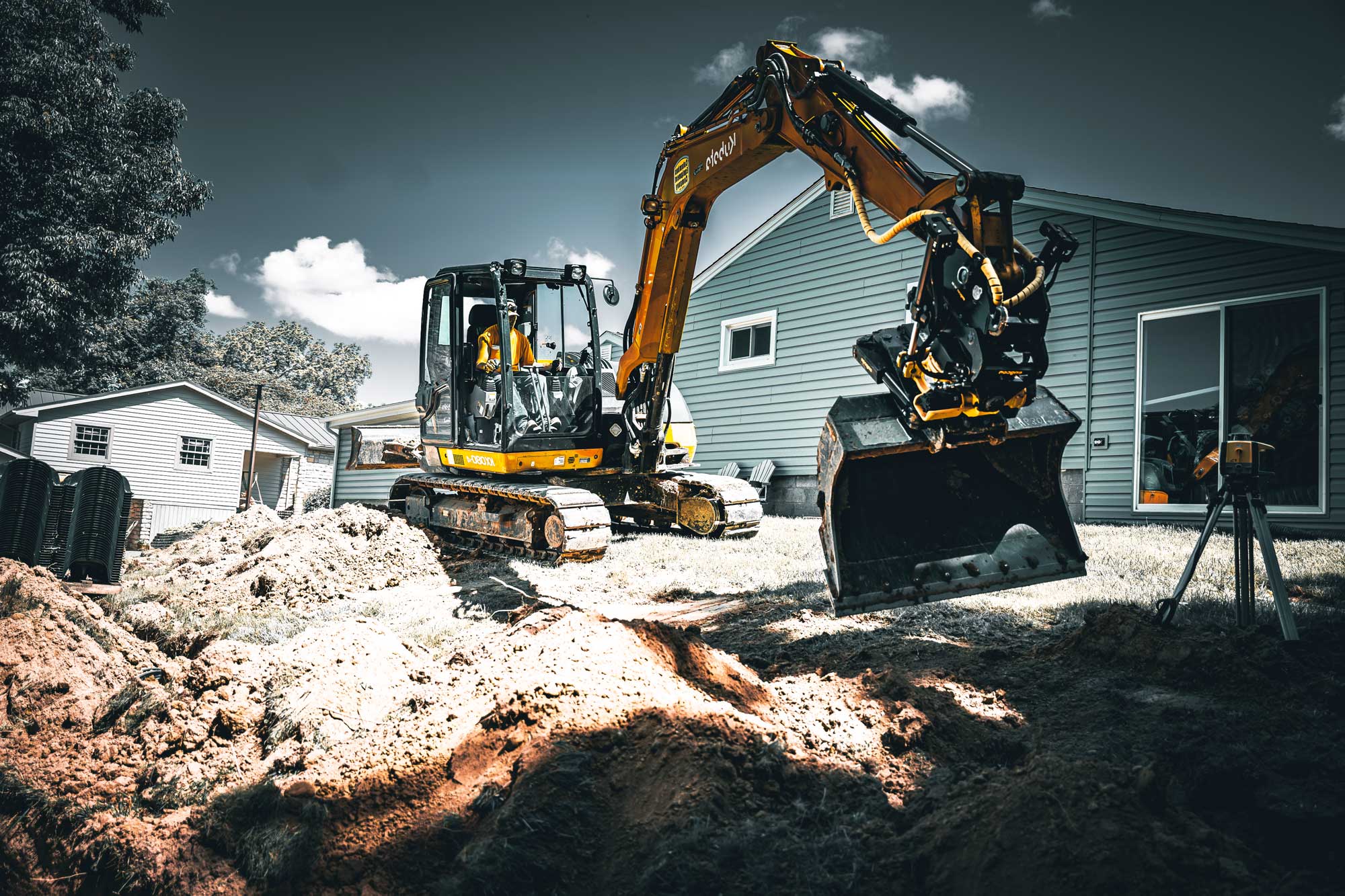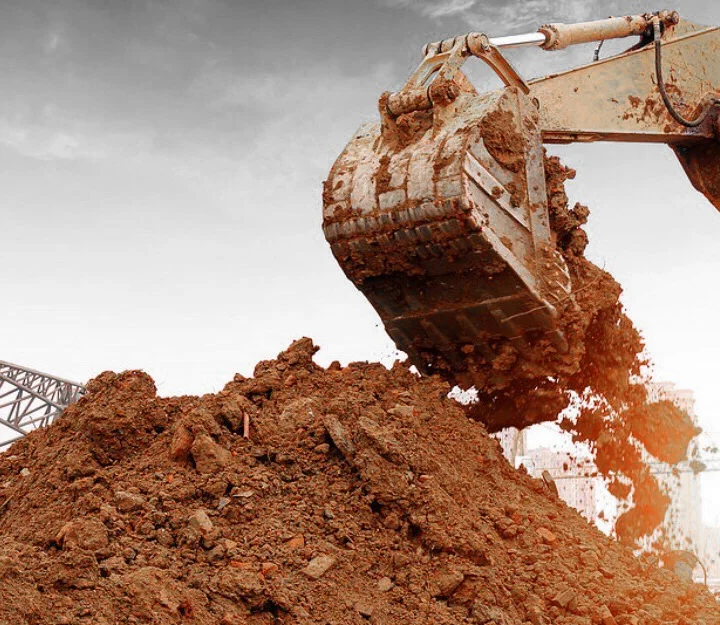Dump Truck Companies in Ohio - Reliable Dump Truck Providers Across Ohio
Dump Truck Companies in Ohio - Reliable Dump Truck Providers Across Ohio
Blog Article
Introducing the Art of Excavation: Pro Tips for Safe and Efficient Excavating
As dirt is transformed and planet is relocated, the details of excavation expose themselves, demanding a keen understanding of equipment, dirt structure, safety procedures, and environmental factors to consider. The expertise required to navigate these elements properly can imply the difference in between an effective excavation project and a possible catastrophe.
Significance of Proper Equipment
To guarantee the security and effectiveness of any kind of excavation project, using the appropriate equipment is extremely important. Excavation jobs differ in range and intricacy, ranging from little residential landscape design tasks to massive building and construction tasks.
Excavators are fundamental pieces of equipment in any type of excavating procedure. These versatile makers can be found in different sizes to suit various job demands. Miniature excavators are excellent for smaller jobs, while bigger excavators take on more substantial tasks efficiently. Backhoes are one more necessary tools kind, incorporating the features of a loader and an excavator in one maker. They are important for jobs needing flexibility and ability to move.
Excavators stand out in jobs that require pushing huge amounts of dirt or particles. By investing in the proper equipment, excavation jobs can be completed safely, on time, and with accuracy.
Understanding Soil Structure
An extensive grasp of dirt structure is essential for executing excavation jobs with precision and security. Comprehending the various kinds of soil is important as it directly affects excavation methods, devices choice, and overall project effectiveness. Dirt composition usually contains 4 primary components: sand, silt, clay, and raw material. Each element has one-of-a-kind properties that influence how soil responds to excavation procedures.
Sand particles are the biggest and give good water drainage but offer little communication. Silt particles are smaller than sand however bigger than clay, providing moderate drainage and cohesion. Clay bits are the tiniest and give high cohesion however bad water drainage. Organic matter, such as rotting plant product, impacts dirt fertility and stability.
Before starting excavation, performing soil examinations to establish its structure and features is essential. This information aids in selecting the ideal tools, applying precaution, and creating excavation methods tailored to the certain dirt conditions - dump truck companies in ohio. By understanding dirt composition, excavation specialists can enhance job end results while making sure safety and adherence to finest practices
Precaution and Protocols
Comprehending soil composition is the foundation whereupon precaution and methods for excavation tasks are built, making sure the well-being of workers and the success of the endeavor. When it pertains to safety and security throughout excavation, there are a number of crucial measures that have to be applied to minimize threats and protect against accidents.
Primarily, prior to any digging begins, an extensive assessment of the site ought to be performed to identify any possible risks such as underground energies, unsteady dirt conditions, or neighboring structures that can present a danger. It is essential to have a proficient individual manage the excavation procedure to make certain that all security methods are complied with strictly.
Additionally, all employees included in the excavation needs to be appropriately educated in secure digging methods and the appropriate operation of equipment. By sticking to these security steps and procedures, excavation projects can be completed effectively and without case.
Reliable Excavation Planning
When beginning on an excavation task, thorough preparation is vital to guarantee efficiency, safety and security, and effective results. Reliable excavation preparation includes a number of essential actions that are vital for the smooth execution of the job. The very first step is to perform a comprehensive website analysis to identify any type of potential threats, anonymous such as below ground utilities or unstable dirt problems. This information is essential for establishing an in-depth excavation plan that consists of security measures and take the chance of mitigation approaches.
Once the website evaluation is total, the next action is to produce a clear timeline and timetable for the excavation tasks. This includes determining the sequence of tasks, tools demands, and manpower allocation. Appropriate scheduling aids avoid hold-ups and makes sure that the project remains on track.

Furthermore, communication amongst all employee is vital during the planning stage. Clear instructions, regular updates, and efficient coordination are vital for a successful excavation job. By investing time and initiative in precise preparation, excavation teams can considerably improve productivity, decrease dangers, and achieve successful outcomes.

Managing Environmental Considerations
With boosting focus on ecological sustainability in construction techniques, taking care of environmental factors to consider has ended up being an important facet of excavation projects. Excavation activities have the prospective to influence the surrounding environment through soil disintegration, debris overflow, habitat disruption, and contamination of water sources. To mitigate these risks, it is vital to carry out best methods that focus on environmental management.

Additionally, correct waste management is vital to avoid dirt and water contamination. Executing procedures for the disposal of dangerous materials, recycling of waste products, and decreasing using harmful chemicals can considerably minimize the environmental impact of excavation projects. By integrating these methods into excavation planning and execution, building and construction companies can make certain that their jobs are not only over here safe and effective but also ecologically responsible.
Conclusion
Finally, mastering the art of excavation requires a detailed understanding of appropriate devices, dirt make-up, safety and security actions, and reliable planning. By following these guidelines and taking into consideration ecological factors, excavations can be carried out safely Look At This and effectively. It is important to focus on safety and security and performance in every excavating job to make certain successful end results.
As soil is transformed and planet is relocated, the intricacies of excavation disclose themselves, requiring a keen understanding of devices, dirt make-up, security methods, and ecological considerations.To make certain the safety and performance of any excavation task, making use of the proper tools is extremely important.A detailed grasp of dirt structure is fundamental for performing excavation projects with precision and safety. Understanding the various types of soil is essential as it straight impacts excavation methods, equipment selection, and overall job efficiency. By understanding dirt make-up, excavation experts can boost job end results while ensuring security and adherence to best practices.
Report this page